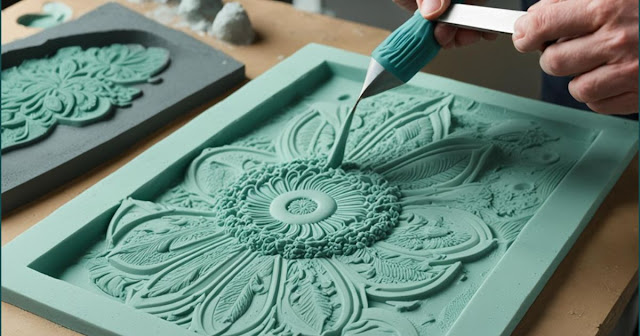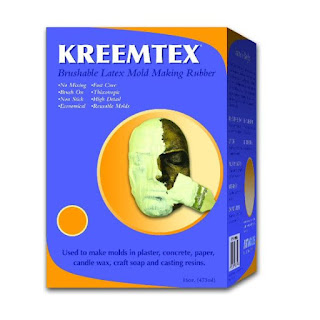Welcome to the exciting world of mold making! Do you ever stop and wonder how artists and makers recreate amazing sculptures and objects? How do they make sure every little detail is perfect?
The magic is all about making a mold. It's a tradition that dates to ancient times. Today, it's a key to making and sharing beautiful creations. Mold making lets artists make many copies of their work. It also lets them play with new materials and techniques.
So, what is mold making, and how can you start your own journey?
We'll explore the basics of mold making. We'll show you the steps and the tools you'll need. From choosing materials to keeping fine details, we've got you covered. Get ready to jump into a world of endless creativity!
Mold Making
- Mold making is an ancient art form that allows artists to replicate objects and explore endless creative possibilities.
- Quality materials, such as those provided by Artmolds, play a crucial role in successful mold making.
- Understanding the fundamentals of mold making, including the different types of molds and the step-by-step process, is essential.
- Advanced techniques in mold making, such as multi-part molds and mold modification, can take your skills to the next level.
- By exploring the art of making molds, you can elevate your craft and open a world of possibilities for casting and reproducing your favorite pieces.
Understanding the Basics of Mold Making
Welcome to our detailed guide on making a mold! You're about to learn a lot about this amazing art. We'll give you the basics so you can start your own mold making adventure.
First, let's look at the main types of molds used. Silicone and plaster molds are two common choices.
- Silicone molds: These are great for their flexibility and durability. They can capture very fine details. They're perfect for making molds of items using materials like resin, wax, and clay.Silicone molds can be poured or brushed on the item. This creates a perfect copy of your original piece.
- Plaster molds: Plaster molds are affordable and versatile. They're mainly used for simple molds. Plaster molds work well for casting materials such as concrete, plaster, or soap. They help you get smooth and clean finishes easily.
Now, with the types of molds explained, let's get into the details of how to make a mold. It's a detailed set of steps to make sure your mold turns out well.
- Get your workspace ready, including setting up your original item and the mold box.
- Choose the right mold material, like silicone or plaster, based on your project.
- Mix the mold material following the instructions, making sure the ratio is correct.
- Apply the material to your item, making sure to cover all the details.
- Let the mold dry or set for the recommended time.
- Take the mold off the item slowly to not damage it.
- Clean and check your mold to ensure it's ready for casting.
Follow these steps, using the right materials. You will make a reliable mold that perfectly copies your item. It will catch all the small details too.
Now, you know the basics of making a mold. You're set to let your creativity soar. Whether you're an artist, crafter, or just like to DIY, mold making is key. It helps take your projects to a whole new level.
Exploring Advanced Mold Making Techniques
To become a master in mold making, it's key to try advanced methods. This part will show you techniques that take your skills up a notch.
Multi-Part Molds
Creating multi-part molds is a complex but rewarding method. It allows you to catch every detail and shape. This is perfect for pieces with intricate designs.
When making a multi-part mold, ensure each part is smoothly separated. Use a mold release agent to aid this. Then, align and secure each piece properly for an accurate reproduction.
Mold Modification
Sometimes, you might need to tweak a mold to fit your needs better. This is where mold modification comes in. It helps adjust the mold for different materials or sizes.
Modifying a mold requires careful handling. Take your time and be meticulous to prevent errors. Proper planning ensures the changes match your vision.
Creating Molds for Complex Objects
Handling complex objects in mold making can be tough. Yet, there are methods to make it work, even for the most detailed designs.
A useful method is a two-part mold for complex shapes. This way, you can get your casting out easily without losing details. It works great for items with tricky parts or cuts.
Using flexible materials, like silicone rubber, is also a key trick. They help take the shape of the object accurately and demold easily. This keeps the final product's details intact.
By learning advanced techniques, you open to more creative possibilities. You can handle challenging projects and get pro-level results. So, dive into these methods and let your creativity flow.
Conclusion
Mold making is a cool way to copy stuff and let loose your artistic side. All you need are the proper materials and some know-how. Then, you can start making molds that help make whatever you like.
Being into mold making can really level up your creative game. It fits anyone who loves art, does it for fun, or likes DIY. Making a mold gives you a huge sense of accomplishment. You see what you've imagined right in front of you. It's like making your dream a reality, mold by mold.
At Artmolds, we care a lot about what goes into mold making. Our products are perfect for both newbies and those who do it like a pro. We offer solutions you can trust. So, when you're ready to start, we're here to help you get great results.
Don't put it off any longer. Dive into the world of mold making right now. Artmolds is here to show you how to make a mold. Let's turn your creative dreams into something real, starting today.
FAQ
What supplies are necessary for creating mold?
You will need mold-making silicone, a mold box, and a mixing container to make a mold. Also, get a release agent and a scale for accurate measurements. Don't forget various tools for mixing the molds.
How long does it take to make a mold?
Making a mold's timing depends on the object's complexity and mold type. Simple molds finish in a few hours. More complex ones need steps and curing, taking days.
Can I make a mold of any object?
Yes, you can mold almost any object if it's safe and you have the right skills and materials. Remember, think about the object's size, shape, and how tricky it is. Some objects may need special techniques or multiple molds for better results.
How do I ensure my mold captures all the details of the object?
To get every detail, carefully apply the mold material to the object. Make sure it fills every small space. Techniques like brushing or using a vacuum can help. They reduce air bubbles for a smoother, more detailed mold.
What safety precautions should I take when making a mold?
Keeping safe when making a mold is key. Always work where there’s fresh air or wear a respirator against fumes. Use gloves and eye protection to avoid touching the materials. Also, follow the product instructions for safety.
Can I reuse a mold?
Usually, molds can be used several times, depending on their type and the materials. For example, silicone molds are durable and good for many uses. But, over time, wear, tear, or design changes might mean making a new mold.





















